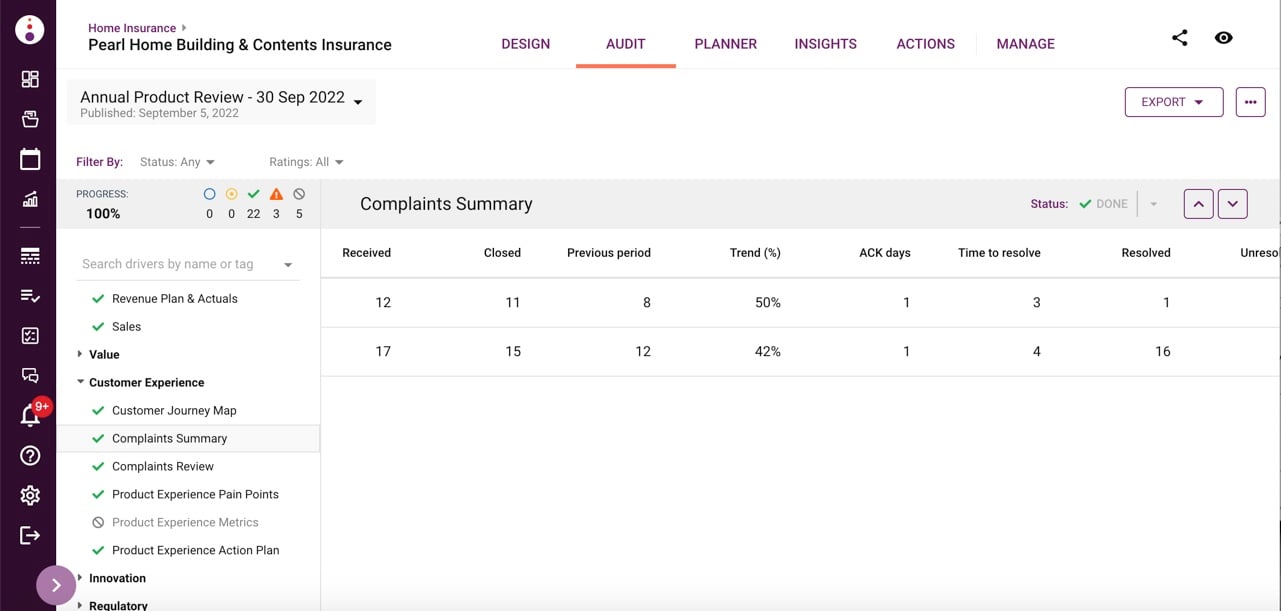The Power of Customer Feedback: The Role of Product Managers in Addressing Complaints
by Leica Ison

As a product manager, customer complaints are a crucial source of information that can help you understand your customers' pain points and improve the customer experience and overall product value.
However, it is vital to approach customer complaints with a structured and systematic approach to ensure that you can effectively analyze and take action on the information gathered. In this article, we will discuss a step-by-step process for investigating customer complaints and what to look out for to improve customer experience and product value.
Product manager steps to monitor and review customer complaints
Step 1: Collect Customer Complaints
The first step in analyzing customer complaints is to collect them. You can gather customer complaints through a variety of channels, including email, phone, social media, talking with your service teams and feedback forms on your website. It is important to monitor customer complaints at a product level or if you dont have that level of data at a portfolio or cluster level.
The Skyjed recommended template for customer complaints monitoring covers covers the following 7 areas:
- number of complaints
- complaint trends
- time to resolve
- escalated
- Abandoned
- Resolved with payment $
- Aged complaints
Here is an example of the monitoring template that is also using the trigger workflow to generate a notification when certain threshold are met eg complaints equal to or greater than 20 per month, a trends increase month on month of greater than 10% etc.

Step 2: Categorize Customer Complaints
Once you have collected customer complaints, the next step is to categorize them. This will help you identify patterns and trends in the types of complaints you receive.
Some common categories include issues with product functionality, customer service, shipping and delivery, pricing and product quality. You can use tools such as Skyjed's annual product review, which provides customer experience/complaints driver templates, to categorize and analyze the complaints and provide an insights report for your management updates.
Step 3: Analyze Customer Complaints
The next step is to analyze the customer complaints you have collected and categorized. This will help you identify the root cause of each complaint and understand the underlying issues causing frustration for your customers.
Some common root causes include poor product design, insufficient training for customer service representatives or sales team, pricing, and lack of information or transparency during the shipping and delivery process. Conducting a launch-ready checklist can also be useful if you are developing a new product.
Step 4: Prioritize Customer Complaints
Once you have analyzed the customer complaints, it is important to prioritize them based on the severity and frequency of the issues. For example, complaints about product functionality that affect multiple customers should be given higher priority than complaints about a single customer's experience with customer service.
Prioritizing customer complaints will help you to focus on the most pressing issues and make the most significant impact on improving the customer experience.
Step 5: Take Action on Customer Complaints
The final step is to take action on the customer complaints you have analyzed. Set a strategic or risk action in Skyjed workspace to manage the action promptly. This could involve making product changes, reviewing pricing, improving customer service, updating marketing and sales collateral or implementing new shipping and delivery policies.
It is essential to involve cross-functional teams, such as engineering, customer support, legal and risk teams and marketing, in taking action on customer complaints to ensure that the changes you make are effective and comprehensive.
What to Look Out For to Improve Customer Experience and Product Value
- Product Functionality: Look out for complaints related to product functionality and usability. This can help you identify areas where your product can be improved to meet your customers' needs better.
- Customer Service: Pay close attention to complaints about the customer service experience. This can help you understand what is causing friction for your customers and identify gaps in customer journey map and opportunities to improve the support process.
- Shipping and Delivery: Keep an eye out for complaints related to shipping and delivery. This can help you identify areas or distribution channels where you can improve the process to make it more transparent and efficient for your customers.
- Product Quality: Look for complaints related to the quality of your product. This can help you identify areas where you can improve the design or manufacturing process to ensure that your product is of high quality.
- Product Pricing: Look for complaints that relate to your product pricing. Categorize the complaints and monitor which segments of your target market are complaining about pricing. Review your target market statement that identifies the target customers and excluded details to determine if you are mis-selling to customers. This is sometimes referred to as an adverse target market.
- Trust and Value: Finally, keep an eye out for complaints related to trust and value. This can help you understand what is causing your customers to feel that your product is not delivering the expected value. compared to your competitors. This may be related to your marketing material, pricing or to service-level commitments that you are missing. Compare your product features and pricing to competitors on product value map.
So the key take-out is that analyzing customer complaints is an integral part of being a successful product manager. Collecting and documenting customer complaints, identifying common monhtly, quarterly, annual trends and issues, investigating root causes, developing a plan of action, and monitoring results can improve the customer experience and increase trust in your product.
By taking these steps, you can ensure that your product continues to meet your customers' needs and remain a valuable and trusted solution in the marketplace
Skyjed's product management and governance platform enable product managers to monitor, analyze and report customer complaints using a combination of features. The Trigger workflow feature in the platform automates the monitoring of customer complaints and sends notifications if a threshold, such as 20 customer complaints per month, is reached.
This feature is a game-changing tool for product lifecycle assessments and annual reviews. It provides real-time and comprehensive insights into customer complaints, enabling product managers to take prompt and informed actions.
In addition, the ability to efficiently track and report on customer complaints can help product managers stand out in management presentations by demonstrating their commitment to providing high-quality products and customer satisfaction.
You can learn more about what is a product governance framework here.
About Skyjed
Skyjed is product lifecycle and governance platform. Skyjed’s Ai-powered end-to-end product platform bring together every data point across the entire product portfolio into a single source of product truth. Skyjed was founded in 2017 and is headquartered in London and offices in Sydney and Melbourne, Australia. For more information visit Skyjed



